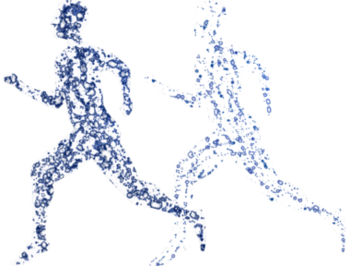Salivary Markers for Water Loss Estimation during Physical Exercise
Abstract

Salivary markers have been proposed as noninvasive and easy-to-collect indicators of dehydrations during physical exercise. It has been demonstrated that threshold-based classifications can distinguish dehydrated from euhydrated subjects. However, considerable challenges were reported simultaneously, for example, high inter-subject variabilities in these markers.
Therefore, we propose a machine learning approach to handle the inter-subject variabilities and to advance from binary classifications to quantitative estimations of total body water (TBW) loss. For this purpose, salivary samples and reference values of TBW loss were collected from ten subjects during a 2-h running workout without fluid intake. The salivary samples were analyzed for previously investigated markers (osmolality, proteins) as well as additional unexplored markers (amylase, chloride, cortisol, cortisone, potassium). Processing all these markers with a Gaussian process approach showed that quantitative TBW loss estimations are possible within an error of 0.34 l, roughly speaking, a glass of water.
Furthermore, a data analysis illustrated that the salivary markers grow nonlinearly during progressive dehydration, which is in contrast to previously reported, linear observations. This insight could help to develop more accurate physiological models for salivary markers and TBW loss. Such models, in turn, could facilitate even more precise TBW loss estimations in the future.
Data
The data is available at PhysioNet.
Publications
- , , , , :
Salivary Markers for Quantitative Dehydration Estimation During Physical Exercise
In: IEEE Journal of Biomedical and Health Informatics 21 (2017), p. 1306-1314
ISSN: 2168-2194
DOI: 10.1109/JBHI.2016.2598854
BibTeX: Download
